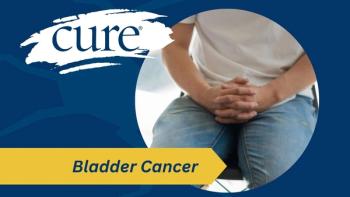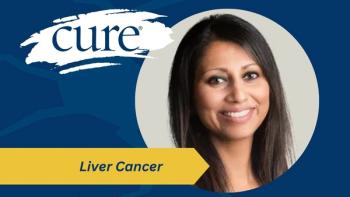Nearly all patients responded to the CAR-T cell therapy, Carvykti (ciltacabtagene autoleucel; cilta-cel), in a recent trial evaluating the agent in patients with relapsed or refractory multiple myeloma.
These findings were presented by Dr. Jens Hillengass, at the 2024 Tandem Meetings on Transplantation & Cellular Therapy.
Patients included in the phase 2, multicohort CARTITUDE-2 trial were separated into two groups: those who received one to three prior lines of therapy (cohort A; 20 patients) and those with relapse after first-line treatment (cohort B; 20 patients). As of April 2023, both cohorts had durable results at the median follow-up (cohort A, 29.9 months; range, 3.3 to 35.6; cohort B, 27.9 months; range, 5.2 to 32.1).
- Carvykti, a CAR-T cell therapy, demonstrated high response rates in patients with relapsed or refractory multiple myeloma.
- Both cohorts in the CARTITUDE-2 trial showed durable responses with high rates of MRD negativity, indicating a lack of detectable cancer DNA in blood samples.
- Patients experienced rapid responses to treatment, with median times to first and best response reported.
- Safety data indicated manageable side effects, with most patients experiencing cytopenia-related effects, and one neurotoxicity event reported in cohort B.
MRD negativity, which is a lack of detectable cancer DNA in blood samples, occurred in 100% of MRD-evaluable patients (17 patients) in cohort A and 93.3% of MRD-evaluable patients (15 patients) in cohort B. Of the patients evaluable for sustained MRD negativity at six months or more (cohort A, 11 patients; cohort B, 13 patients), eight (72.7%) and 10 (76.9%), respectively, experienced sustained MRD negativity, while among those at 12 months or more (cohort A, 14 patients; cohort B, 13 patients) seven (50.0%) and eight (61.5%) experienced the same outcome.
“…And not all patients were evaluable for MRD and that can sometimes be challenging,” Hillengass professor of oncology and internal medicine, chief of myeloma, vice chair for research in the Department of Medicine at the Roswell Park Comprehensive Cancer Center in Buffalo, New York, noted.
The objective response rate (ORR; percentage of patients whose disease shrinks or disappears from treatment) in cohort A was 95%, including a stringent complete response (sCR; no detectable plasma cells in the bone marrow) rate of 85%, a CR (no disease detectable) rate of 5%, and very good partial response rate (VGPR) rate of 5%, and was 100% in cohort B, including an sCR rate of 73.7%, CR rate of 15.8% and VGPR rate of 10.5%.
In cohort A, median time to first response was 0.99 months (range, 0.7 to 3.3) and median time to best response was 3.25 months (range, 0.9 to 13.6), with a 24-month duration of response (DOR) rate of 73.3% , while cohort B demonstrated median times of 0.95 months (range, 0.9 to 9.7) and 5.1 months (range, 0.9 to 11.8), with a 24-month DOR rate of 70.5%.
At that time of the median follow-up the overall survival (OS; time patients live before death of any cause), progression-free survival (PFS; time patients live before their disease worsening), and duration of response (DOR) were not estimable in both cohorts. However, the 24-month OS rates in cohorts A and B were 75% and 84.2%, respectively, and the 24-month PFS rates were 75% and 73.3%.
There were no new safety signals reported; however, one neurotoxicity event occurred in cohort B. Regarding grade 3 and 4 (moderate to severe) side effects of special interest, two patients (10%) in cohort A and 1 patient (5.3%) in cohort B experienced cytokine release syndrome (CRS; when the body releases too many inflammatory molecules, called cytokines, into the blood). The median time to onset of CRS was seven days in cohort A and eight days in cohort B, and the median duration was three and four days, respectively.
Other grade 3 and 4 treatment-emergent side effects in cohorts A and B included CAR T-cell neurotoxicity (5% and 5.3%, respectively) and other neurotoxicity (5% and 5.3%). Movement and neurocognitive were found only in cohort B (5.3%), and second primary malignancy was also found only in cohort B (5.3%).
Overall, cytopenia-related grade 3 and 4 side effects in cohorts A and B were neutropenia (95% and 89.5%, respectively), lymphopenia (80% and 47.4%), thrombocytopenia (40% and 26.3%), anemia (45% and 47.4%) and leukopenia (60% and 31.6%).
Patients in cohort A had 1 to 3 prior lines of therapy and were lenalidomide (Revlimid) refractory MM, while patients in cohort B had experienced early relapse of less than 12 months after autologous stem cell transplant (ASCT) or the start of antimyeloma treatment if no transplant was conducted.Specifically in cohort B, 16% of patients had high-risk cytogenetic abnormalities, 79% were refractory to their last lines of therapy, 16% had triple-class refractory disease and 79% had prior ASCT.
The median age was 60 years in cohort A and 58 years in cohort B, and the majority of patients were male in both cohorts (65% and 73.7%, respectively). Regarding race, 90% were White and 10% were Black in cohort A, compared with 73.7% and 10.5%, respectively cohort B.
“We believe these [data] show that early introduction of cilta-cel in these patient cohorts is promising, and CARTITUDE-4 trial has also done a phase 3 study evaluating these early lines of therapy,” Hillengass stated.“Cohort A provides insight into longer-term survival outcomes that may be expected in the CARTITUDE-4 trial and cohort B data highlight the durable efficacy of cilta-cel in patients with early relapse where there is unmet need.”
For more news on cancer updates, research and education, don’t forget to subscribe to CURE®’s newsletters here.






